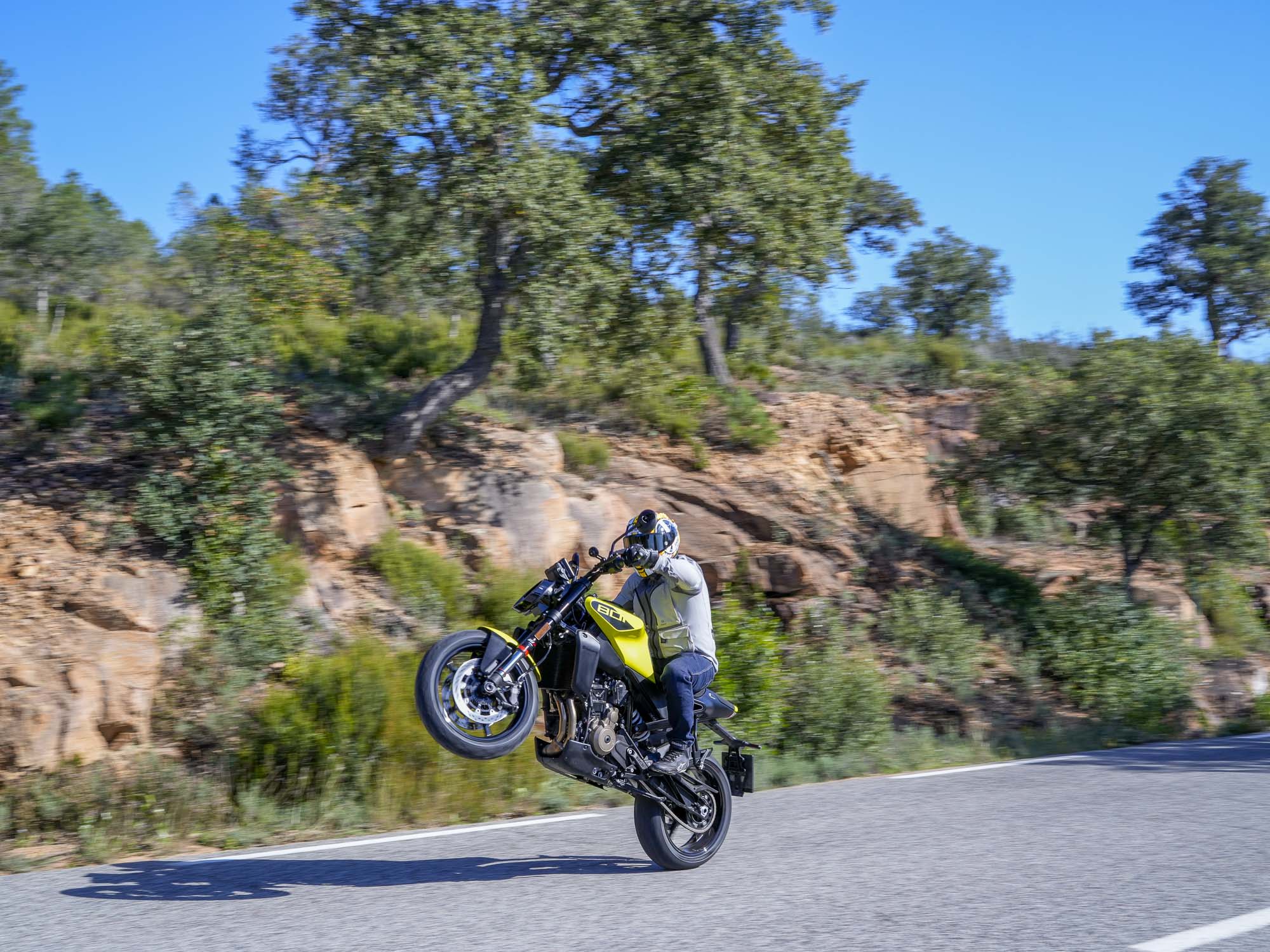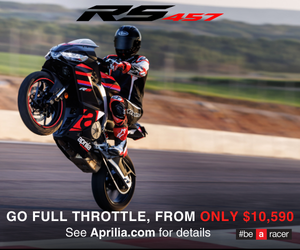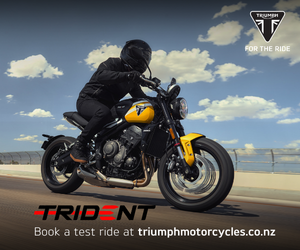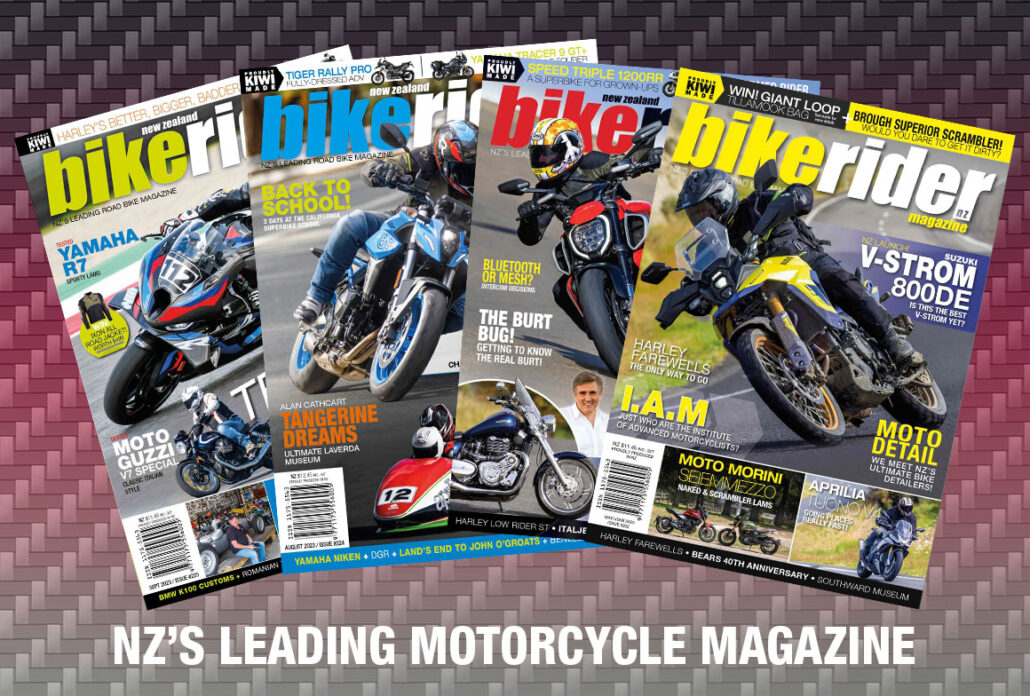- Moves away from the cafe racer style and more performance naked
- Excellent rider aids if you option them
- Versatile and accessible for many different riders
Choosing a Husqvarna is now easier with the KTM-owned manufacturer offering two variants of each new model. Whether you go for a single-cylinder 125 or 401, or the twin-cylinder 801, you have two options: Vitpilen or Svartpilen. These are essentially the same bike with different styling and subtle personality changes, a formula Husqvarna has successfully used for the past decade.
Words: Adam Child Pics: Husqvarna
The new Vitpilen 801 follows the Svartpilen 801, launched in 2024, completing the 799cc twin lineup. While the Svartpilen carries traditional scrambler styling, the 2025 Vitpilen moves away from its café racer roots with a more conventional naked design, featuring a deeper seat and a more practical riding position.
Based on the KTM 790 Duke, the Husqvarna uses the Austrian manufacturer’s punchy and lightweight LC8c parallel-twin (now produced in China) in a tune that produces a quoted 77kw or 105hp, which is handful more horses than the 790 Duke and CFMoto’s 800NK Sport. Like most bikes to come out of the Pier Mobility Group, suspension is WP, complete with sportier settings than the Svartpilen. Other differences between the sister bikes are mainly cosmetic and include lower bars, a radiator cover and belly pan. There’s no flyscreen, but there is that distinctive Bi-LED headlight and more road-focused tyres – Michelin Road 6 instead of Pirelli MT60 RS – that should help make it an absolute blast to ride on twisty roads. We headed to the south of France to find out.

Sharp Looks At A Price
Parked outside our launch HQ near Nice, the new Vitpilen 801 blends in seamlessly with the swanky hotels and celebrity beach houses. While it may have lost a bit of its café racer appeal, it still looks striking and unique, standing apart from the 790 Duke it’s based on. In person, its bold styling makes a stronger impression than in photos, and I’d choose the Husqvarna over the KTM for looks alone. The real question, though, is whether I’d be willing to pay the premium.
Comparisons are inevitable. Even before mounting the 820mm seat, I couldn’t help but note the similarities and differences between the Husky, the KTM, and the new CFMoto 800NK. Prices are yet to be confirmed, but the Vitpilen should come in a fraction cheaper than the Svartpilen ($16,799). We’re not getting the 2025 KTM 790 Duke in NZ so there’s no competition there, but it is a jump from the 800NK ($13,490), just with a marginally higher spec.
Furthermore, competition in this category is strong and very price competitive. Honda and Suzuki both produce similar parallel-twin powered nakeds. And let’s not forget bikes like the BMW F900 R and Triumph’s impressive Street Triple 765. But, setting pricing aside, I really wanted to see whether the Vitpilen 801 performs as well as it looks.

We set off early in the morning along the Mediterranean coast, where the lightweight 801 felt right at home, effortlessly navigating the roads lined with luxury mansions. The handling was light, precise, and intuitive, while the optional Easy Shift quickshifter worked smoothly. In Street riding mode, the fuelling and throttle response were nearly flawless, providing crisp and immediate reactions to throttle inputs. The exhaust let out a satisfying burble during fast downshifts, adding character. The five-inch TFT dash had a higher-end feel compared to the KTM’s, and the switchgear was more refined than the CFMoto’s.
The road conditions varied, with damp corners and slick white lines, but the Vitpilen’s lean-sensitive traction control and ABS helped keep things stable. The Michelin Road 6 tyres warmed up quickly and provided confidence even on wet surfaces, allowing the 801 to carve through traffic and flow smoothly through sweeping corners. Every hairpin exit was thrilling, as the LC8c’s torque quickly shot the bike back up to speed.

Technology That Really Works
After leaving the coast, we headed into the mountain passes for more challenging roads and explored the bike’s three riding modes: Sport, Street, and Rain. An optional Dynamic mode allows fine-tuning of anti-wheelie and nine levels of traction control. This extra mode offers more control depending on riding style. On the first section of the mountain road, I turned off traction control entirely and relied on my experience to wheelie the bike. The 801 made it easy, and the anti-wheelie system worked well for those who want more control. It offers varying levels of intervention, from subtle to strong. Even with the least intrusive setting, it was still effective. Riders who don’t want wheelies can keep the standard rider aids active and save some money.
Hitting the mountain roads, I discovered the Vitpilen still retained the playful character of the KTM 790. The chassis is nearly identical, with just slightly higher weight, but the added power made it even more fun. Husqvarna has wrapped the KTM 790’s chassis in a stylish design, but the bike still maintains its enthusiastic character. It handles hairpins, sweepers, and direction changes with ease, making it ideal for spirited riding.

The Vitpilen, though agile, is surprisingly comfortable. After an hour of mountain riding, I was still eager to continue. The ‘Supermoto’ setting deactivates the rear ABS for easier sliding into corners. This feature may appeal to more experienced riders or those taking the bike to track days, but most riders will appreciate the cornering ABS and the braking performance from the J.Juan brakes. The 801 would perform well on a track, thanks to its agile handling and suspension setup.
The WP APEX suspension, front and rear, is capable of track action. The forks feature compression damping on one leg and rebound damping on the other, with easy-to-use adjusters that don’t require tools. The rear suspension has rebound damping and spring preload adjustment, though harder to access. Husqvarna even provides recommended track settings for those taking the bike to a track. The 105-horsepower twin is more than capable, and ground clearance is plentiful. However, when pushed hard, the J.Juan brakes and Michelin tyres could feel stretched. The twin 300mm discs and four-piston radial calipers perform well in most situations, offering a controlled feel. But in certain conditions, particularly when braking downhill into tight corners, I had to use all four fingers on the lever. While the Michelin Road 6 tyres offered good grip in mixed conditions, they didn’t inspire confidence for knee-down levels of lean.
That said, many competitors, like the Honda CB750 Hornet or Suzuki GSX-8S, would struggle with ground clearance and suspension if fitted with grippier tyres. The Vitpilen 801, however, would perform better with sportier tyres and upgraded brake pads. With those changes, it could outperform some heavier Japanese competitors.
Most owners will find the Vitpilen’s setup more than adequate for regular use. Only experienced riders, possibly moving down from sportier bikes, might want more for track days. But the 801’s chassis can handle it.
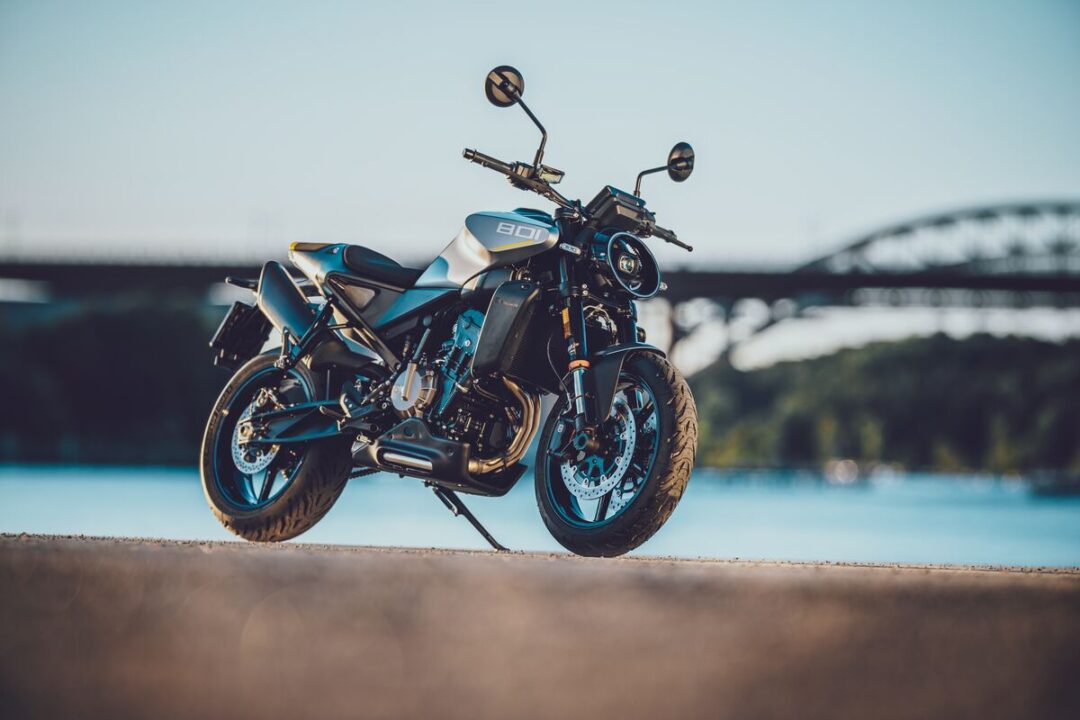
Versatile For Different Sized And Type Of Riders
Husqvarna gave us a full day to test the bike, and it revealed some unexpected aspects. Despite its sporty looks, the 801 is quite comfortable. As a shorter rider, I could reach the ground easily at low speeds, while taller riders found the bike roomy. After a full day of testing, the parallel twin engine remained frugal, with the 14-litre fuel tank offering a range of over 150 miles, even during more spirited riding.
While the Vitpilen 801 wasn’t designed for long-distance touring, it offers decent comfort for weekend trips. The seat is comfortable, and the weight distribution is well-balanced. The dash is easy to read and connects to your phone for calls, messages, and navigation. The controls and switchgear feel high-quality, and even in Dynamic mode, the fuelling and Easy Shift system are smooth, whether commuting or pushing the bike to its limits. For long-distance cruising, you might need the optional cruise control, but for most riders, the 801 can handle longer rides with ease.

Should You Buy The Husqvarna Vitpilen 801?
Ridden in isolation in the beautiful south of France, the Husqvarna Vitpilen 801 is hard to fault. It looks great, is individually styled, and has the aura of something bespoke rather than a run-of-the-mill production bike. The LC8c engine is punchy and offers enough grunt to be fun yet is far from intimidating. It’s also smooth at low speeds, especially with the optional Easy Shift quickshifter fitted.
The steering is light, the chassis responsive, predictable, multi-adjustable and able to accommodate sportier rubber. With track-biased tyres fitted, it would excel at a track day. Just as importantly, it’s low, light and easy around town – and the excellent rider aids are there just in case.

The Vitpilen 801 is a great bike, but there are a few factors that can’t be ignored. KTM already produces the similar 790 Duke (although NZ won’t get it) which lacks a few horsepower compared to the Husky but is cheaper. The CFMoto might not be in the same league in terms of looks and appeal, but it also shares many components and is cheaper still. Furthermore, if we add the Dynamic mode and the optional Easy Shift, it could easily make it the most expensive bike in this class, even more than the excellent and more powerful bikes like Triumph’s 765 Street Triple and Yamaha’s MT-09.
Of course, some will be willing to pay that extra amount for a very individual middleweight naked that’s more desirable than the KTM or CFMoto. And when they do, they’re likely to be extremely pleased with this versatile and great looking machine.
SPECIFICATIONS
2025 Husqvarna Vitpilen 801 (expected in NZ: April 2025)
New price
TBC
Capacity
799cc
Bore x Stroke
88mm x 65.7mm
Engine layout
Parallel Twin
Engine details
Water cooled, 4v per cylinder. DOHC
Power
77Kw/105hp @ 9250rpm
Torque
87Nm/ 64lb-ft 6500 rpm
Transmission
6 speed – chain drive
Average fuel consumption
4.5l/100km 63mpg quoted. 5.1l/100km 55.5mpg tested (hard ride).
Tank size
14 litres
Rider aids
Lean sensitive TC and ABS, plus three rider modes, Street, Rain and Sport (dynamic optional extra)
Frame
Chromoly steel w/ cast aluminium subframe
Front suspension
WP Apex 43mm inverted fork, compression and rebound damping adjustable; 140mm travel
Front suspension
Compression and rebound.
Rear suspension
WP Apex monoshock, rebound damping and preload adjustable; 150mm travel
Rear suspension
Rebound and preload
Front brake
Radial-mount 4-piston calipers, dual 300mm discs w/ Bosch ABS
Rear brake
1-piston floating caliper, 240mm disc w/ Bosch ABS
Front wheel / tyre
120/70×17 Michelin Road 6
Rear wheel / tyre
180/55-17 Michelin Road 6
Dimensions (LxWxH) N/A
Wheelbase
1475mm
Seat height
820mm (std)
Weight
180kg (no fuel)
Warranty
2-Years

